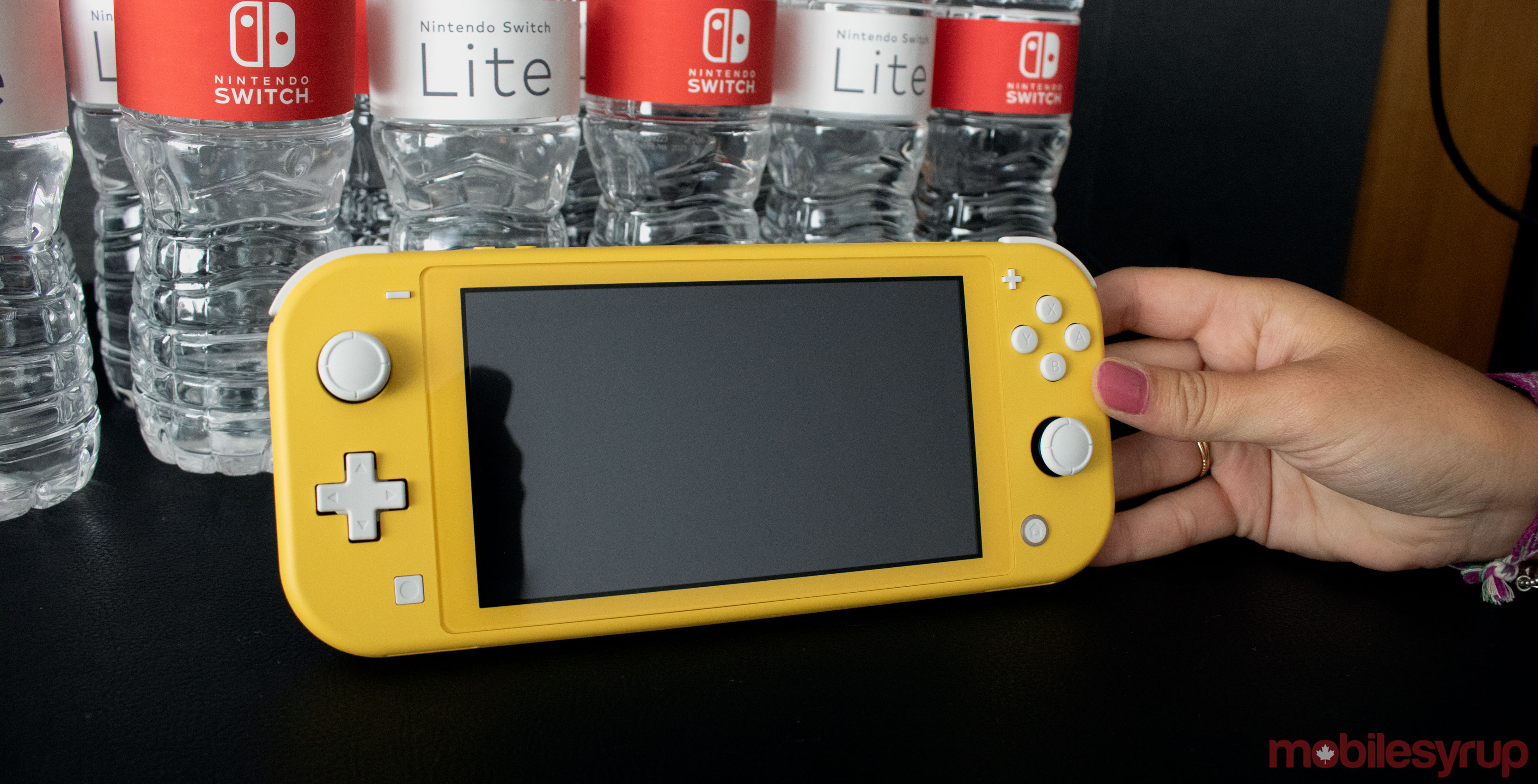
I recently had the opportunity to go hands-on with the Switch Lite, Nintendo’s upcoming revision of the standard Switch. Even though the Switch Lite has lost some of the features that made the original Switch great, I left the hands-on event impressed by the console — in fact, I may even purchase one of my own.
The best thing about the Switch Lite was how it feels in your hands. This was in part because the console’s weight, coming in at 0.61 lbs, is 0.2 lbs lighter than the regular Switch.
Even though the Switch Lite is double the weight and much bigger than the classic Game Boy Advance, I couldn’t help but draw comparisons between the two handhelds. While the Gameboy Advance lacks joysticks, the extra buttons and the large screen, I still felt like I was holding the successor to the handheld because of the Lite’s shape. I’d even go so far as to say that it also felt like a bigger PlayStation Vita in some ways.
Regarding size, the Nintendo Switch Lite is 3.6-inches high, 8.2-inches long, 0.55-inches deep with a 5.5-inch display.

One of the first things I noticed about the console is how much more I prefer the Lite’s size compared to the standard Nintendo Switch. Since its body and screen are smaller than the Switch, the Lite feels more portable than its larger counterpart. I often found the standard Switch too big, and that it wasn’t the type of device I’d want to lug around on my daily commute, though I know I might be in the minority when it comes to this opinion.
I even opted to use the console docked more often than not because of this. For example, on six-plus hour plane rides, I wouldn’t pull out the console because it felt it was too large to be used in handheld mode.
While I didn’t get to take the Switch Lite on-the-go, I think its size is perfect. And even though some smartphones have a bigger display than the Switch Lite, I found the 5.5-inch screen perfectly displayed the games I played during my brief time with the console.
The Switch Lite also features texturized material on its rear that felt more comfortable to hold than the regular Switch and also seems to make the handheld more durable. Additionally, the coating even adds a little bit more personality to the handheld.
Switch vs. Switch Lite

However, the Nintendo Switch Lite’s differences don’t stop with the look and feel. If you’re hoping for simply a smaller Switch, this isn’t the console for you.
The Switch Lite is only usable in handheld mode. It also lacks Joy-Cons, a kickstand and the ability to connect to a dock. That means you can’t connect it to the TV, use Tabletop mode or detach a Joy-con and hand it to your buddy.
Without these features, it feels like the Switch Lite is more of a successor to the Nintendo 3DS and 2DS, Nintendo’s handheld-only gaming systems than a lite version of the Switch. However, as expected, the Japanese gaming giant assured me that it would keep the 3DS/2Ds line completely separate from the Switch Lite.
Without the above functionality, the Switch Lite isn’t the full package, and in a sense, even its name doesn’t make sense considering the ‘Switch’ in ‘Nintendo Switch’ represents the ability to change the way you play.
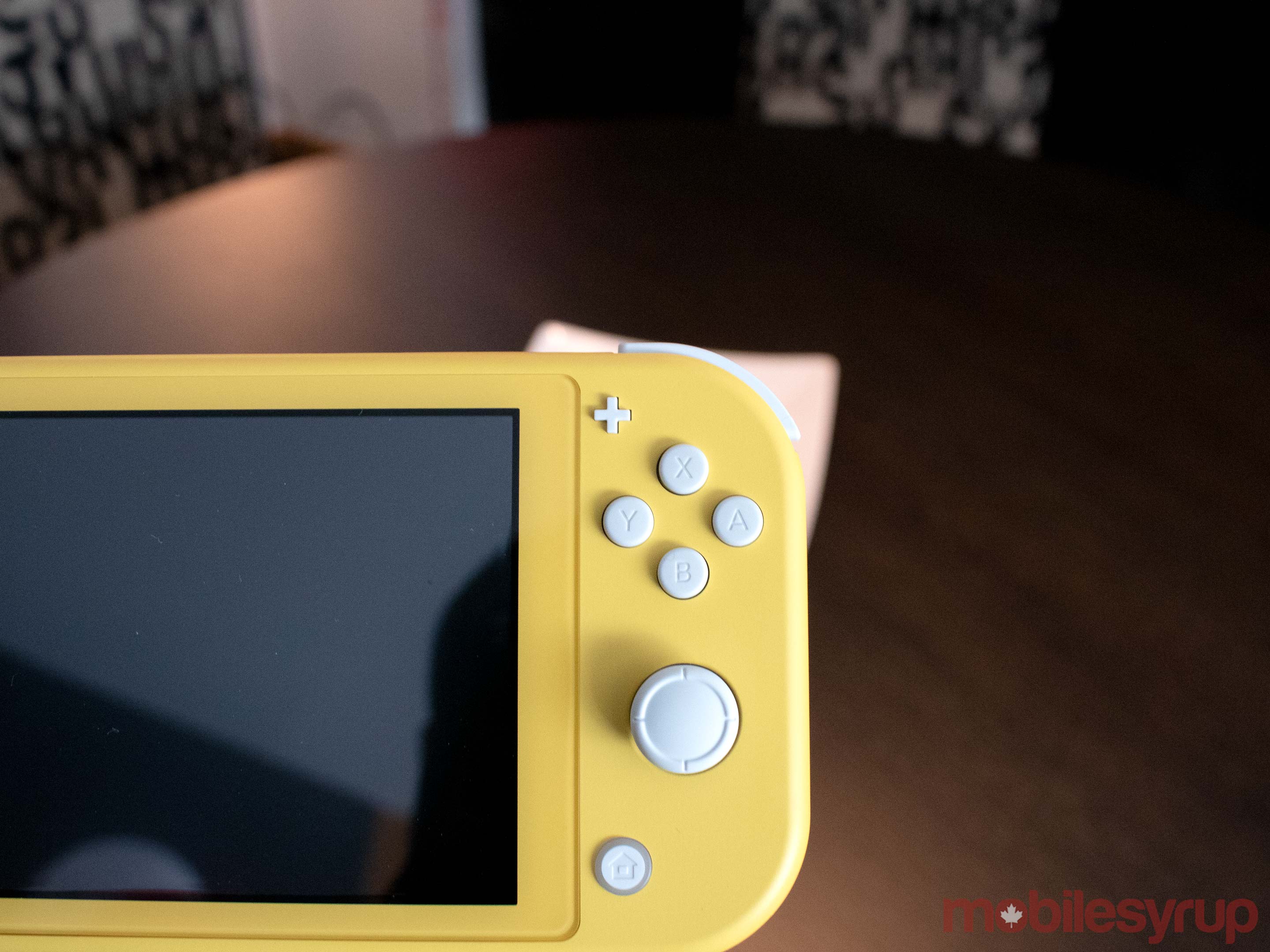
Due to the lack of Joy-Con controllers, the Switch Lite also doesn’t feature HD Rumble and an IR Motion Camera. This means that you’ll need to purchase Joy-Cons for games that require the gamepads’ specific features. And if you buy the Joy-Cons separately, you’ll also need a Joy-con Charging Grip since the Switch Lite can’t charge them.
Nintendo suggests users look for a specific ‘Handheld mode’ icon when buying games for the Switch Lite.
Even though the Switch Lite lacks Joy-Cons, this wasn’t something I found to be an issue. If anything it only enhanced the gameplay experience because with my regular Switch, I often accidentally pop out my Joy-Cons by accident when playing games.
Another change that I didn’t notice was the Switch Lite lacks an ambient brightness sensor. This means you’ll need to change the handheld’s display brightness manually. In a dimly lit room, this didn’t seem to make a difference to me.

While I couldn’t test the battery on the Switch Lite, according to Nintendo’s website the device features a 3,570mAh battery that can last approximately three to seven hours. The original Switch had a bigger 4,310mAh battery but could only last 2.5 to 6.5 hours.
The increase of the battery is due to the Switch Lite’s smaller display and its updated processor. The Switch Lite features a newer Nvidia Tegra processor that is more power-efficient than its predecessor.
Playing the games
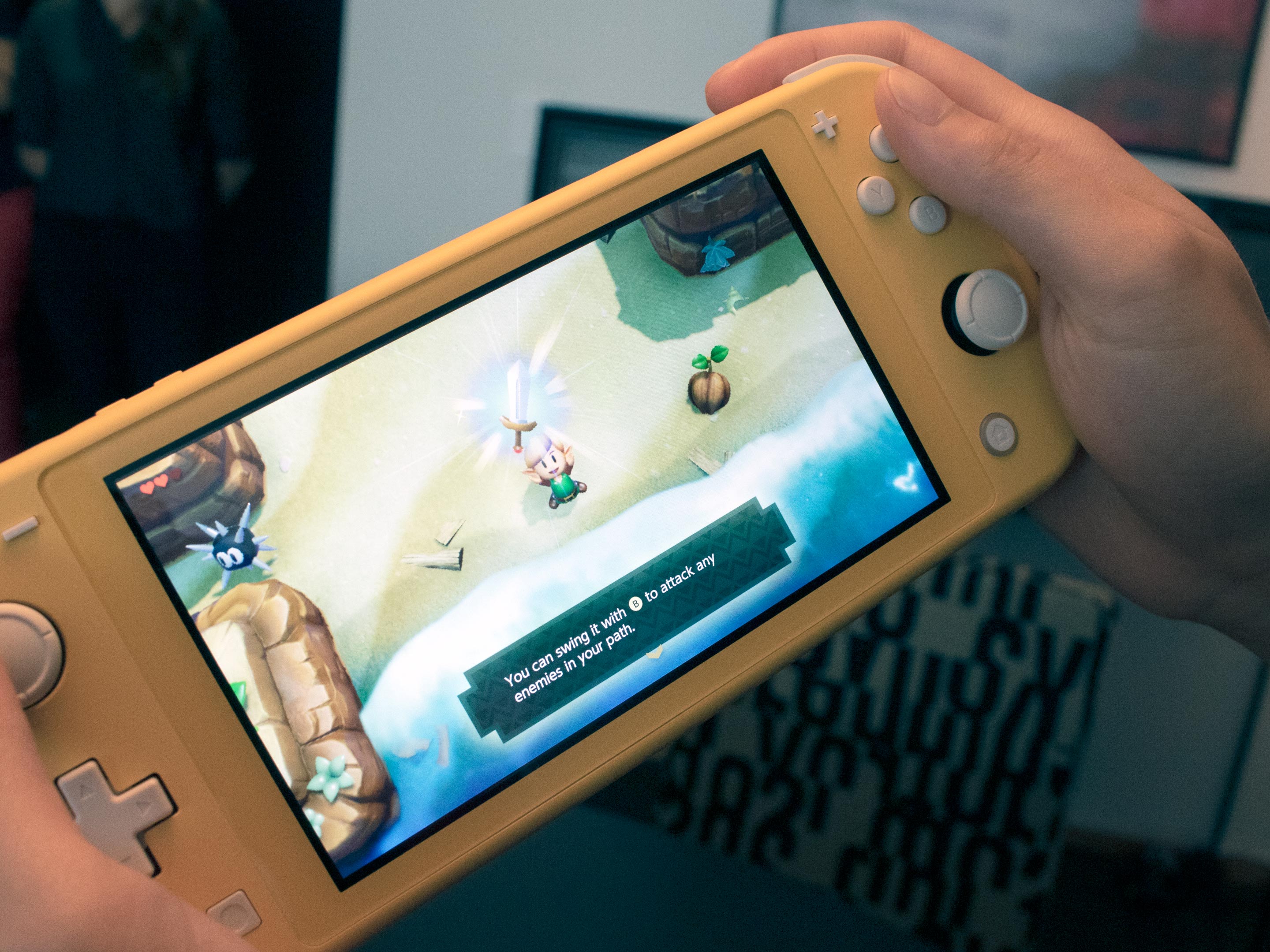
While, I didn’t play anything as intensive as Legend of Zelda: Breath of the Wild, I did have a blast playing The Legend of Zelda: Link’s Awakening, and Luigi’s Mansion 3 on the Switch Lite.
I played almost the full demo for Luigi’s Mansion 3 until the boss killed me. During my experience, the graphics looked just as good if not better than the regular Nintendo Switch in handheld mode.
This is because in handheld mode both the Switch Lite and basic Switch displays graphics in 720 x 1280-pixel resolution (720p), and, due to its slightly smaller display, the Switch Lite features more pixels per inch (ppi).
The game flowed smoothly without stuttering, which is what I’d expect from a Nintendo-developed console.
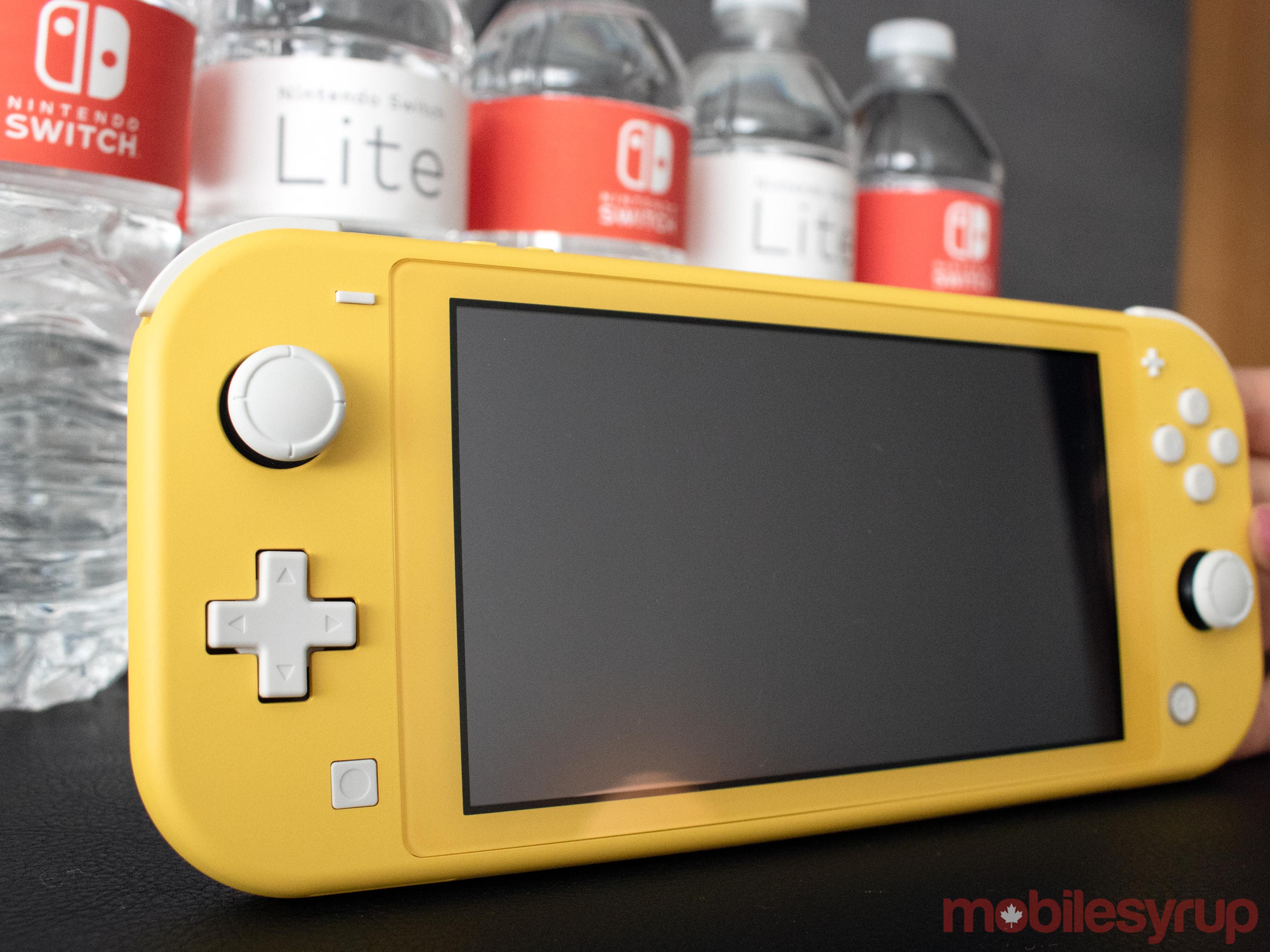
Even though I was using a smaller display, there wasn’t a moment where I thought I’d benefit from a bigger screen.
Nintendo reportedly used different display technology for the Switch Lite in comparison to the regular console. However, in my brief with the device, I didn’t notice a difference.
After years of using the smaller screens on handheld consoles like the 3DS, DSi and the Gameboy Advance SP, the Nintendo Switch Lite feels like the natural step up from these devices. The bigger Switch, on the other hand, is more like a console that can switch into a handheld, whereas the Switch Lite is the handheld-only Nintendo system I’ve been waiting for.
The better handheld

I used both the ‘Grey’ and ‘Yellow’ Switch Lite variants. While the Grey was quite bland, I thought the Yellow variant was flashy and reminded me of Pikachu.
There’s also a ‘Turquoise’ colour and a limited-edition Pokémon Sword and Shield-themed console. I didn’t get to see either of these models.
The Nintendo Switch Lite plays games well, the screen looks solid and in-hand the Switch Lite feels excellent.
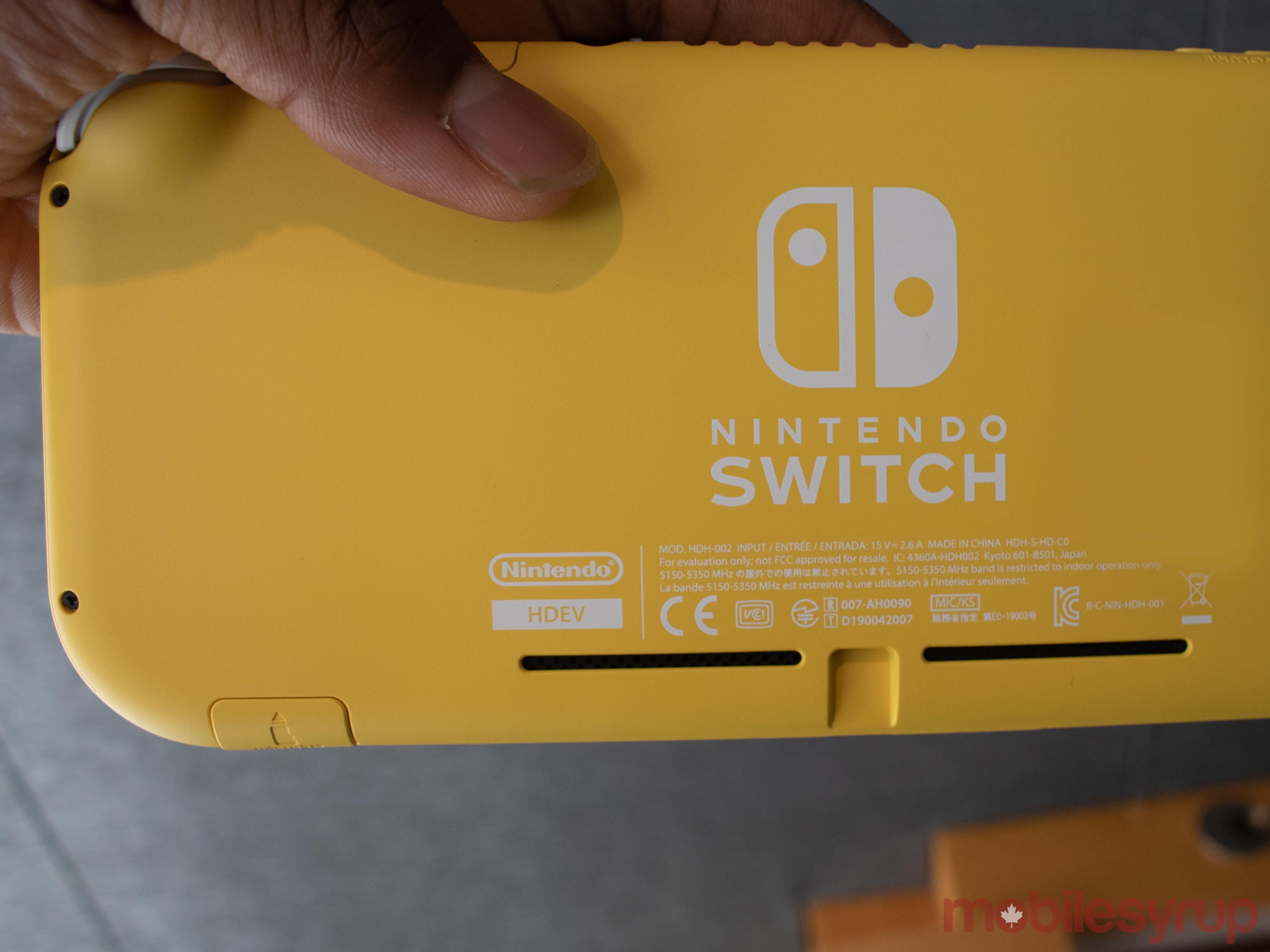
If you already have a Nintendo Switch, you probably don’t need the Switch Lite. Considering the Switch does everything the Switch Lite is capable of and more. But if you’re like me and are still considering the Switch Lite because of its size and appearance, there is actually a way to share content between the two consoles.
If you don’t own a Switch console yet, take a look at the Switch Lite. While it might not offer the full package, it’s still a viable option
With a smaller body, and given how comfortable it feels in your hands, the Switch Lite seems to be the better choice out of the two versions of the Switch depending on what you’re looking for, especially considering its $259.99 price tag.
Nintendo is launching the Switch Lite on September 20th. The limited-edition Pokemon Sword and Shield console launch November 8th, before the launch of the associated title.
MobileSyrup may earn a commission from purchases made via our links, which helps fund the journalism we provide free on our website. These links do not influence our editorial content. Support us here.


